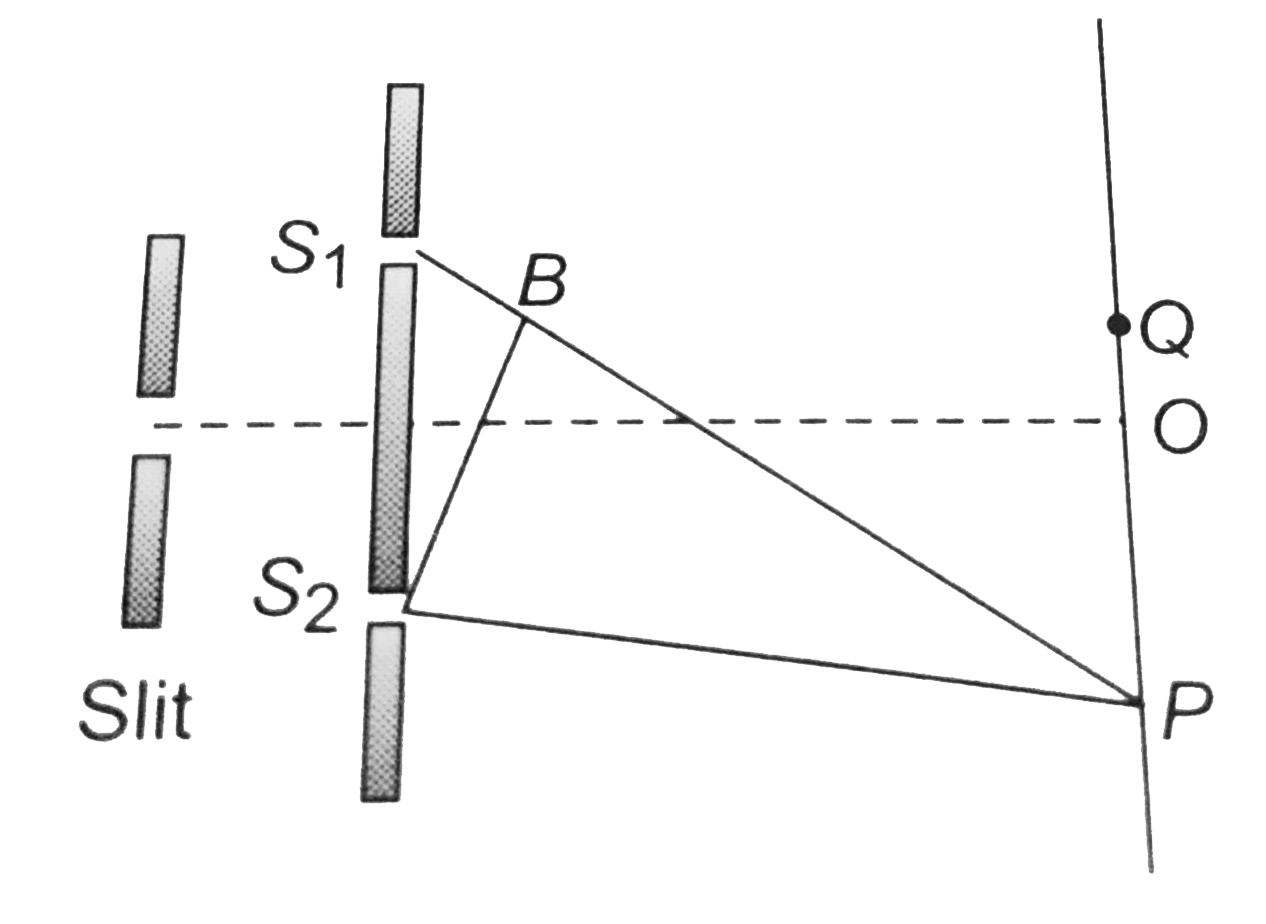In the figure is shown Young's double slit experiment. Q is the position of the first bright fringe on the right side of O. P is the 11th bright fringe on the other side, as measured from Q. If the wavelength of the light used is 600nm. Then S1B will be equal to

(a) 6×10−6m
(b) 6.6×10−6m
(c) 3.138×10−7m
(d) 3.144×10−7m
The correct Answer is:A
P is the position of 11th bright fringe from Q. From central position O, P will be the position of 10th bright fringe.
Path difference between the waves reaching at P=S1B=10λ=10×6000×10−10=6×10−6m.
Topper's Solved these Questions
- WAVE OPTICSBOOK - A2ZCHAPTER - WAVE OPTICSEXERCISE - Assertion Reason
16 Videos
- WAVE OPTICSBOOK - A2ZCHAPTER - WAVE OPTICSEXERCISE - Section D - Chapter End Test
29 Videos
- WAVE OPTICSBOOK - A2ZCHAPTER - WAVE OPTICSEXERCISE - AIPMT/NEET Questions
22 Videos
- SOURCE AND EFFECT OF MAGNETIC FIELDBOOK - A2ZCHAPTER - SOURCE AND EFFECT OF MAGNETIC FIELDEXERCISE - Section D - Chapter End Test
30 Videos
Similar Questions
In Young's double slit experiment, the phase difference between the light waves producing the third bright fringe from the central fringe will be (λ=6000 Å)
View SolutionIn a Young's double slit experiment, d=0.5 mm and D = 100 cm. It is found that 9th bright fringe is at a distance of 7.5 mm from the second dark fringe of fringe pattern. The wavelength of light used is (in Å)
View Solution
Knowledge Check
In Young’s double slit experiment, the central bright fringe can be identified
ABy using white light instead of monochromatic lightBAs it is narrower than other bright fringesCAs it is wider than other bright fringesDAs it has a greater intensity than the other bright fringesIn Young's double slit experiment, if the width of 4th bright firnge is 2×10−2 cm then the width of 6 th bright fringe will be cm
A10−2B3×10−2C2×10−2D1.5×10−2In a Young's double slit experiment, fringe width equal to 1 mm is observed. Then the distance of the nearest bright fringe from the central fringe will be :
A1 mmB0.5mmC2mmDInsufficient data, cannot be determined
In Young's double-slit experiment the distance between the slits is 1 mm and that between slit and screen is 1m. If 10th bright fringe is 5 mm away from the central bright fringe, then wavelength of light used will be
View SolutionYoung's double slit experiment is made in a liquid. The tenth bright fringe in liquid lies in screen where 6th dark fringe lies in vacuum. The refractive index of the liquid is approximately
View SolutionIn Young's double slit experiment, the distance between the slits is 1 mm and that between slit and screen is 1 meter and 10th fringe is 5 mm away from the central bright fringe, then wavelength of light used will be
View SolutionIn Young's double slit experiment, the phase difference between the light waves reaching third bright fringe from the central fringe will be (λ=6000Å)
View SolutionIn Young's double slit experiment if wavelength of light is doubled without changing other conditions, the fringe width will
View Solution
